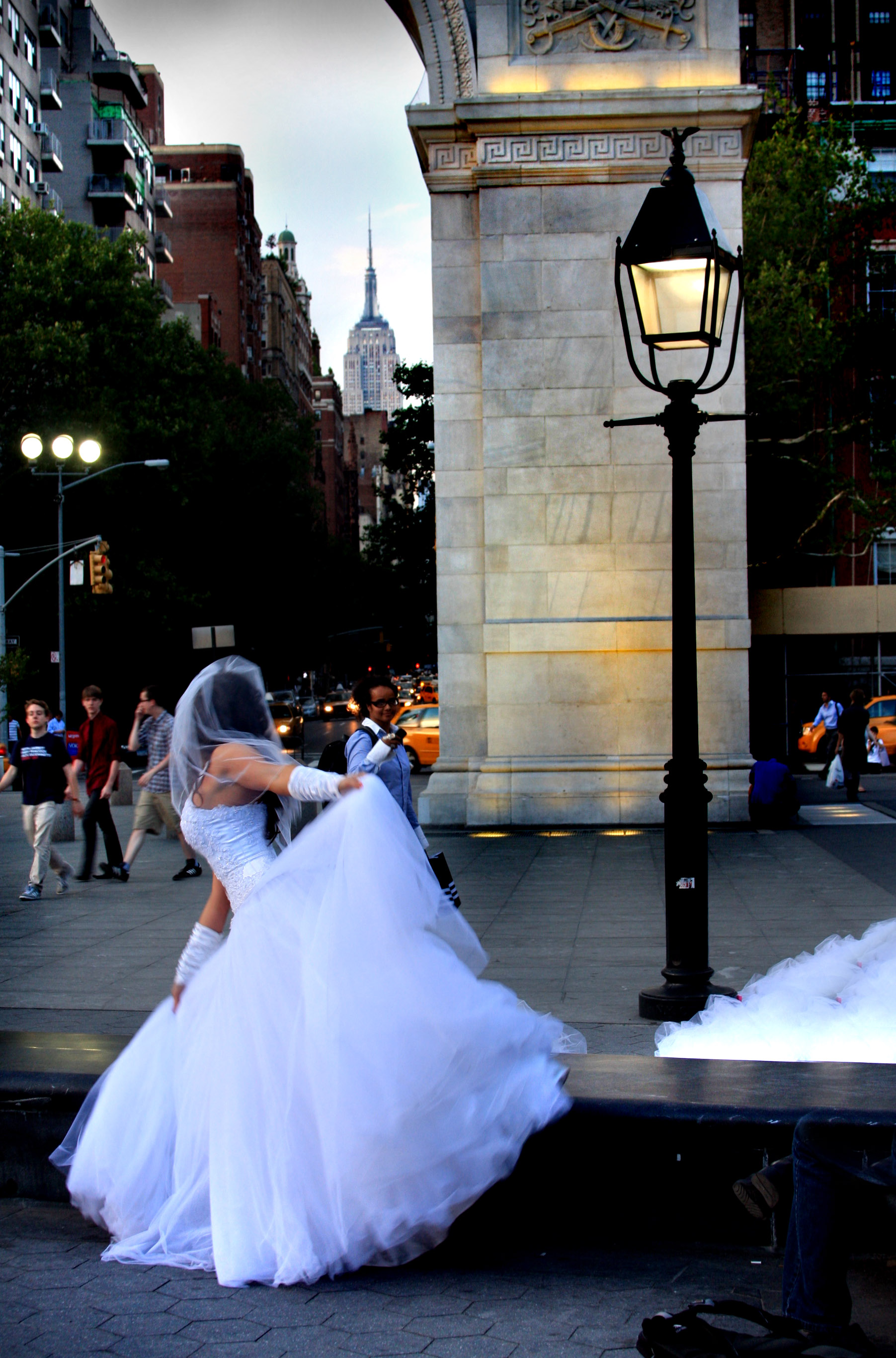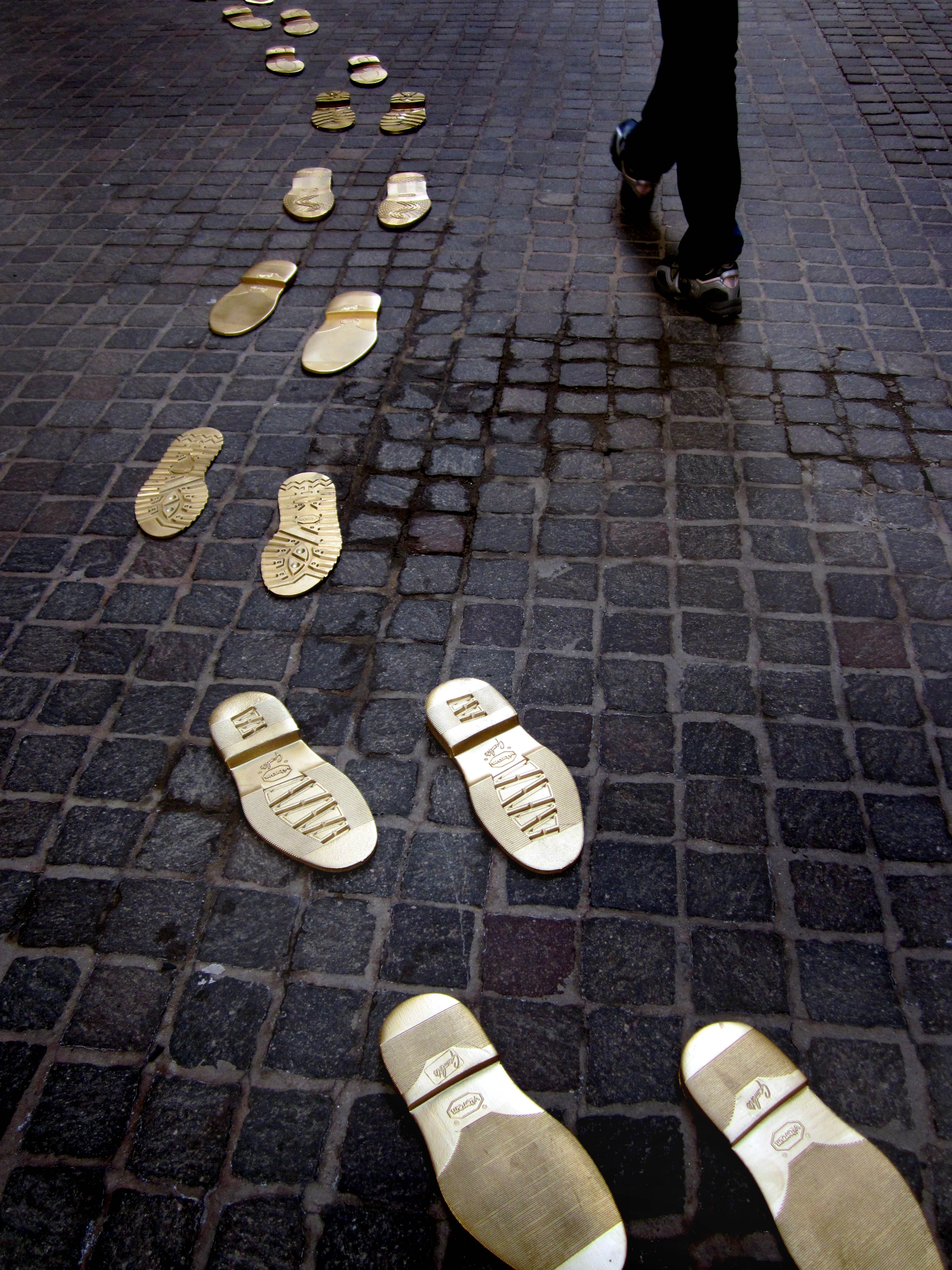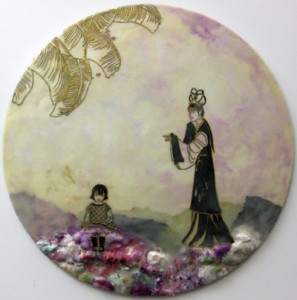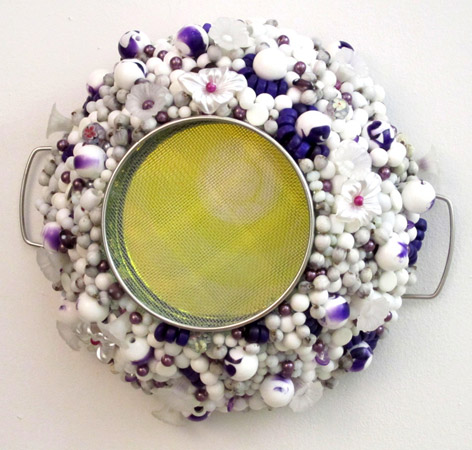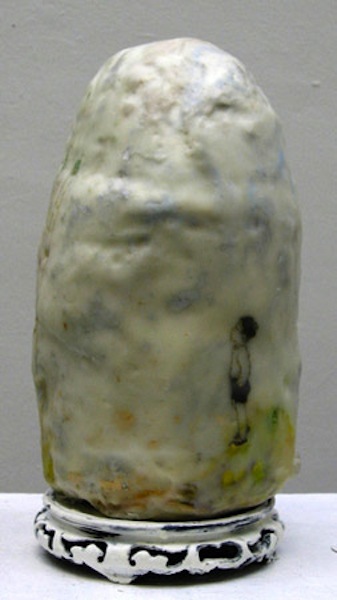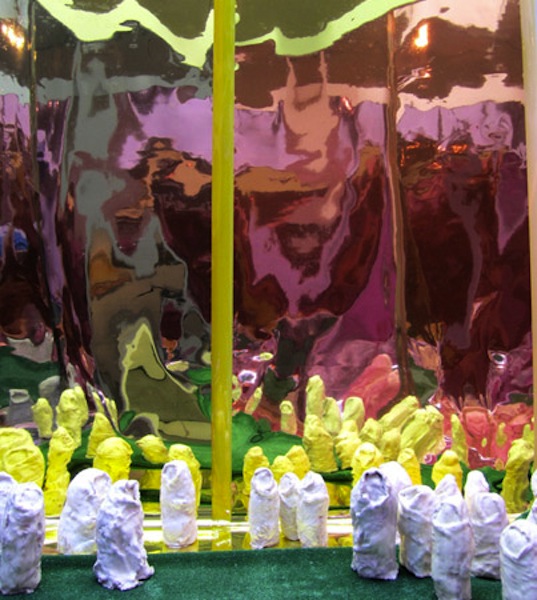By Matthew Morowitz
“Our Lady of Apparitions”
Caridad Sola is a multimedia visual artist and licensed architect who has exhibited and performed works in Miami and throughout the New York metropolitan area. Originally from Miami, Sola moved to New York City about 8 years ago where she worked in architecture for most of that time, even serving as a construction project manager for the 9/11 Museum and Memorial Project. About a year ago, Sola decided to quit her job and pursue the arts full time, devoting the last 8 months to performance work, which she admits she stumbled upon by chance. Her upcoming performance, Our Lady of Apparitions, will be exhibited in October at the Art in Odd Places 2012 festival: MODEL. Art in Odd Places had a few questions for Sola regarding her project …
What inspired Our Lady of Apparitions?
A few years ago, when I was working on a piece about my Cuban Heritage, I got inspired to re-create pictures of the past. In other words, completely re-create a scene from pre-Castro Cuba with myself in these photographs as a character. That evolved into the idea of dressing up like my Catholic Saint names. My full name is “Caridad Maria de las Mercedes Barbara Montano Sola Quintana Polo.” My mother was in her 30s when she had me; and in honor of her faith, she promised to name me after those Saints if I were to be born a healthy baby girl. I was born healthy – and here we are. I lived my entire life knowing I was named after the saints yet never took the time to discover the history behind each figure. It wasn’t until this project that I learned the story behind each name.
Note: My saints’ names are as follows:
· La Virgen de la Caridad del Cobre (Our lady of Charity, the Cuban patron Saint)
· Maria (Jesus’ mother),
· Nuestra Señora de las Mercedes (Our Lady of Mercy)
· Santa Barbara
· The last 4 names (Montano Sola Quintana Polo) are family names.
What about this work do you think will make it an “unforgettable experience”?
It’s not very common to see an “apparition” and even less common to see one in New York City – aka “the devil’s playground.” The performance “Our Lady of Apparitions” explores the belief in the unbelievable through anomalous, quasi-perceptual experience of apparitions. I want to challenge people’s perception, belief, and reality. If they are in some way touched, moved, inspired, or even confronted with this piece, it will ultimately be an unforgettable experience.
“Looking for Mr. Right”
How have your own experiences helped to shape this project?
I personally have never seen the Virgin Mary “appear,” although in the 1990s my mother took our entire family on a pilgrimage to Medjugorje, Yugoslavia. I was fascinated with the length people traveled to see an apparition. What did that mean? What did it provide for them? How does it honor their faith? I am still fascinated by this and therefore created this project as an experience to challenge my own beliefs and notion of what an apparition means to people.
Will this work have any critical religious or political undertones?
Well, yes (religious) – There isn’t any way I can avoid that. My performance consists of dressing up like four different religious figures. Although my intention isn’t a religious message, but rather to have the public think of what it means to see an apparition, how it affects them, what they think about it, and even further – what does that say about their identity.
I am aware that this piece may be confronting to some, but in no way is it meant to be disrespectful to Catholicism. Some may in fact call it sacrilegious. But my intention is exactly the opposite: to honor my mother’s faith, her promise, and my health.
“Souls of Gold”
Will this work have any connections to past performances?
The only other performance that has a connection is “Looking for Mr. Right” where I walked thru the streets of Manhattan wearing an 80-foot long wedding dress. The connection is simply the act of dressing up into an alter ego, and performing in public, stopping New Yorkers in their tracks and providing them with an unexpected experience. I have however created non-performance religious pieces prior to this, such as an installation in 2006 titled “These are Their Prayers” where I casted four sets of hands in paraffin wax, mounted them onto a wall in the shape of a cross, and had each hand holding rosaries that were wrapped in that person’s own personal prayer. Below it laid a gold communion plate. And another installation from 2006 titled “In Gods We Trust” that consisted of a book created out of 19 sacred texts from 14 different religions sitting on a 22 kt gold leafed night table, with Darwin’s “Origin of Species” keeping the table level. Each piece is made to challenge one’s own perception of faith and identity.
“Looking for Mr. Right” Photo courtesy of Thomas Solomon.
Do you think you will explore any of the subject matter from this work in future projects?
It’s definitely possible, but as of right now I do not have anything in mind. The subject matter and expression of each of my works varies greatly. If I were to create another piece with this same subject matter, I have no doubt it will be executed differently …
What drew Sola to performance work was the fact that it was a “totally different experience, in a way it’s like you become the art … before you had to hide behind the art as an artist to produce work, put it out there in an exhibition and then watch people and observe how they interact with it, and then now it’s more like I can’t hide behind art anymore because I’m part of it.” Talking to her after reading her answers to my questions also confirmed a belief I had about Sola’s artistic process in her performances: that she comes up with a concept but lets the idea lead her as opposed to trying to construct a performance around it, allowing the idea to lead her in a direction that might be an extension of or departure from her original intention.
Before she left her job, Sola did do some part time art projects, such as the Souls of Gold, a project that she would often execute during her lunch hour at work. Her transition to full-time artist worked out well as shows started to pick up after she decided to solely pursue this passion.
“Souls of Gold”
“I always knew I wanted to be an artist and that was part of the reason why I quit was because it’s not that I didn’t enjoy the job, it’s just that I knew in the back of my head what was playing was like ‘this is your time to try this out full time, before you have any kids, before you have any responsibilities …’” Her family has also been another great source of motivation and support for Sola, as she was lucky enough to have them assist her in this time of transition.
Sola’s first performance work Looking for Mr. Right involved her walking around NYC for a couple of days in a wedding dress with an 80 foot long train, observing as the dress turns from pure to dirty off-white as a literal symbol of the search for true and lasting romantic companionship in New York. When she originally went into the project she thought the documentation of her performance would serve as the art itself; but when Sola was actually performing this work, she found that the greater meaning and reactions came from the experience of carrying it out and others seeing it as it was happening. Sola’s original intention behind this project was sarcastic, but as she was in the midst of her performance, she found people had overwhelmingly positive things to say to her, thinking it was part of a photoshoot or her actual wedding. “Everyone was congratulating me, and I didn’t even have it in my heart to actually tell them like ‘it’s not real’ you know. ‘it’s an art project …’ I started to just say ‘thank you.’” Overall, the project ended up giving Sola a feeling of hope, as it allowed her to “see the goodness and kindness of humanity” based on the reactions she received. She also felt this project to be liberating and found that any fear she had about doing the performance was overtaken by the enjoyment of actually performing.
“Looking for Mr. Right”
Sola is inspired by many things, sometimes even something as simple as an artistic medium, which she then attaches “… a metaphor … some meaning.” Other times it could be an object that has some history behind it, but from these things, her ideas for a work then just “snowballs” towards her finished project. “It could be anything; it could be walking down the street and something could inspire me or it could be a song.” The artist then went onto talk about how music has inspired a lot of her work lately, with a recent project and her past performance El Paredon even utilizing songs from Florence and the Machine, as she is attracted that kind of music, which she considers “dark and beautiful.”
After a discussion of her work El Paredon, which involved the artist being shot by the audience with water guns filled with red food dye, Sola didn’t realize how shocking this work would be at that moment and described this experience as a “pleasant surprise, because you really never know how it’s gonna go until you do it.”
“El Paredon”
Viewing the concepts and executions of some of her past projects on her website, it is easy to notice how curiosity runs throughout Sola’s works. Sola, it seems, goes on to create performances that have this underlying sense that she is exploring an idea or a situation in order to see what the outcome and the reaction will be not only from the audience, but also for herself. This sense of curiosity is what makes Sola’s performances so attractive, as the audience is right there with her, helping her to explore her own idea, and feeling as free when engaging with her as she does when performing. The fact that Sola’s performances are as much about the audience exploring the concepts as Sola is exploring them herself is the quality that I believe makes her performances truly unforgettable experiences.




